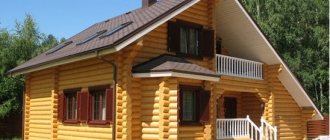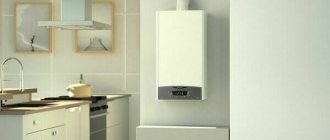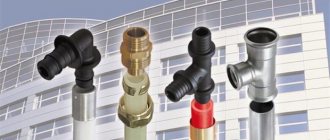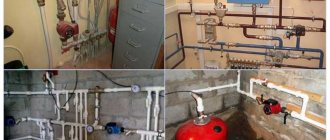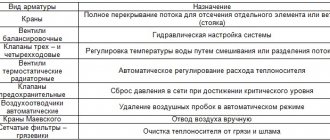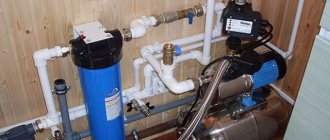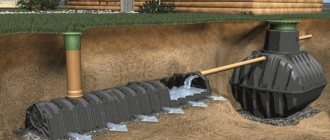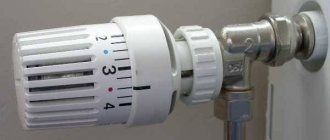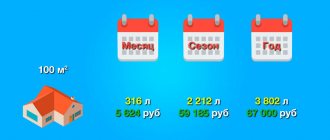Description and principle of operation of electric heating boilers
Gas boilers are popular due to the low cost of fuel, but it is not always possible to connect them due to the labor-intensive procedure and the need for coordination with government agencies. Energy sources for solid fuel units are even cheaper, but there are many more disadvantages - they pollute, require the removal of combustion products, fuel loading, and storage space.
The listed disadvantages are absent in electric boilers, which are sometimes the only option for heating if there is no possibility of supplying gas. Moreover, electrical devices are considered not only as additional or emergency sources, but also as the main devices for the preparation of coolant. With them you don’t have to worry about ignition and other inconvenient issues associated with fuel combustion.
The most economical electric boiler should be chosen from energy-saving induction and electrode models. But we must take into account that in any case, its operation will cost approximately 2.5 times more than gas units, at best 1.5 times. Economy is considered here for situations where there are no other alternatives to electricity or if this type of energy is cheap (there are alternative sources - solar collectors, etc.).
Video
https://youtube.com/watch?v=HR5GVdNN5Tk
https://samelectrik.ru/kak-podklyuchit-elektricheskij-kotel-otopleniya.html
https://teplospec.com/elektricheskoe-otoplenie/pravilnaya-ustanovka-elektrokotla-otopleniya-poshagovoe-rukovodstvo-i-instruktsiya-po-montazhu.html
https://remoo.ru/kommunikacii/skhema-otopleniya-2-h-ehtazhnogo-chastnogo-doma
How electric boilers work, device
The general principle of operation of electric boilers for heating: the coolant (water) circulates using a pump along the circuit of the heating system, through the boiler (internal chamber, flask, coil) and is heated there by heating elements, heat exchangers with electrodes, and induction coils.
The main parts of the electric boiler: housing with heaters, circulation pump, power supply, expansion tank, control and safety system (pressure gauge, check valve and for releasing excess pressure).
Economical electric boilers are required in the following conditions:
- if it is not possible to use gas;
- a unit that is easier to maintain than fuel-powered devices is required;
- preference is given to a cleaner energy source;
- An additional heater is required in case the main device is turned off.
Combined models of units
The advantage of multi-fuel boilers is versatility. The remaining pros and cons of the units are inherited from the corresponding heat generators - gas, electric or wood. In installations it is customary to combine energy carriers in the following combinations:
- firewood - electricity;
- gas - electricity;
- coal - firewood - gas;
- diesel - wood - electricity - gas.
Electric-gas (left) and coal-gas (right) boiler “Zhitomir”
The main idea of a combined heater is the continuous provision of thermal energy to the home with automatic or manual switching to another fuel if necessary. But the combination of several combustion chambers and electric heaters gives rise to a number of disadvantages:
- the size and weight of boilers increases, the price increases;
- The efficiency of using all types of fuel is reduced;
- repair and maintenance becomes more difficult.
The best combination is a combination of a TT boiler with electric heating elements. The heaters are built into the boiler tank and do not increase the original dimensions of the product. If you take an electric gas installation, you will need a permit and a design for connection to the main line.
Types of electric boilers for home heating
There are several types of electric boilers based on the principle of electricity use and operation. Traditional and familiar to everyone - heating elements. More innovative and energy-saving are induction (vortex) and ionic (electrode), they are more expensive, but the cost is paid off by extreme efficiency and efficiency, which weakly or does not decrease at all over time.
The efficiency of all electric boilers is the same - 94–99%, but some types are more efficient due to the design and method of operation. And also over time, due to scale, this characteristic decreases by 10–20% for heating element boilers, but this is not typical for induction and ionic products.
Types of electric boilers:
- with heating elements;
- ionic (heating by electrodes);
- induction (vortex).
Heating elements new electric boilers
Heating boilers with heating elements can only be classified as economical only conditionally: different models may have more efficient heating elements, programming capabilities, and power settings.
Inside the device there is a tubular electric heater - a copper or stainless steel tube (there may be sand or oil inside) with a filament (nichrome). The principle of operation is the same as that of a conventional boiler or air heater: the spiral inside the shell heats up and transfers heat through the tube in which it is enclosed to the water entering the chamber (flask) with the heating element.
When choosing electric heating for a home with a special emphasis on economy, units with heating elements should not be seriously considered. You can choose a high-quality device with more or less energy consumption, but it will still be more power-hungry than induction and ion boilers. On the other hand, the cost reduction can be compared to some extent, since a boiler with a heating element is cheap to maintain.
Advantages and disadvantages of heating elements electric boilers
Advantages of heating heaters with heating elements:
- cheap and convenient repair (the body is easily disassembled, parts are replaceable);
- advanced functionality: power adjustment, programmability, ability to connect a thermostat;
- usually produced in a monoblock compact case (there are convenient wall-mounted sizes) ready for operation, including a safety group, expansion tank, and pump. There is no need to separately purchase and install these elements; you only need to connect the device to the input and output of the heating system.
Minuses:
- the most uneconomical type of electric boilers, especially if two heating elements are used;
- Scale and plaque forms on the heating element, which requires periodic cleaning and replacement. A hard crust reduces efficiency by 10–20%. This statement is controversial, since the water of the heating system is not prone to intense scale formation, but it should not be ignored.
Induction boilers
Types of induction boilers for home heating (sometimes perceived as brand names):
- VIN - “vortex induction heaters”, more innovative with a ferromagnetic body. Smaller in size and 1.5–2 times more expensive than SAV, but more efficient;
- SAV - the principle is the same, but they are positioned as less advanced.
The second heating with vortex boilers is “inverter”. The product includes a current converter from direct to alternating current - an “inverter” (like welding machines).
Immediately after their appearance on the market, induction heaters for heating were positioned as the most advanced and efficient, but application experience showed more shortcomings than expected.
Operating principle of vortex SAV and VIN electric boilers
How does an induction SAV boiler work:
- A high-frequency alternating current (from 50 Hz) is supplied to a metal coil (inductor) - a rod (its role can be played by the coolant pipe itself) with turns of wire. A magnetic field is generated.
- The polarity and vector of the magnetic field change with high frequency.
- An object located close to the described phenomenon is penetrated by constantly changing fluxes of magnetic induction. Foucault eddy currents arise, turning electricity into heat, which heats the water.
The principle of heat transfer in induction boilers is non-contact - the object is heated by electromagnetic fields, and instantly. There is no need for physical contact with the inductor, which increases efficiency.
The electromagnetic principle is used in industry to melt metals. Even a small homemade induction device with a coil with a dozen turns and a few cm² in size is capable of heating metal to red in a few seconds, which illustrates the power and efficiency of a vortex boiler for heating.
Advantages of induction boilers for heating
Advantages of SAV boilers:
- heating is powerful, almost instantaneous;
- microvibrations repel dirt, so there is no scale or deposits on parts in contact with water, no cleaning required;
- economical, the highest efficiency among electric boilers.
Induction boilers are the best for preparing water as it flows through the apparatus, as they provide extremely fast heating. At the same time, heat loss is zero, which distinguishes VIN from heating elements units. Despite the disadvantages, if we consider purely the efficiency of using electricity, induction boilers are the most economical type of electric heaters.
Disadvantages of vortex boilers for heating, feasibility of use
Many sources list many advantages of VINs and SAVs, but in reality the picture is somewhat different; many shortcomings have been discovered:
- most standard sizes have significant dimensions;
- more expensive than heating elements and electrode units;
- heating is extremely powerful, so if the auto-shutdown system breaks down, there is an increased risk of explosion;
- the electromagnetic field is harmful, electrochemical processes provoke corrosion;
- complex repair. It would seem that the device is extremely simple - a coil and a housing - but usually the cylinder of SAV boilers is securely sealed, and it is extremely difficult to disassemble it. It contains electronic circuits of the control unit, which complicates repairs. The coil may burn out, and the cost of a new one is higher than, for example, a new heating element;
- if the SAV is not in a compact case, and the majority are, then a large control unit, a separate expansion tank, a pump, and a safety group will be required;
- in most cases, they are not equipped with a soft start - when turned on and even when simply switching modes, there is a sharp increase in the load on the network, which is fraught with voltage drops (flashing lights and similar effects).
Still, despite the listed disadvantages, a vortex energy-saving electric heating boiler should be considered as a heater for heating a house due to its high level of efficiency (30% more efficient than heating elements). Some of the listed disadvantages are relative, for example, there are small and compact sizes similar to those of products with heating elements. This is the only type of heater whose efficiency does not decrease over time.
Ion (electrode) boilers
Ionic (electrode) energy-saving heating boilers must be distinguished from induction units, despite the fact that they also use the properties of alternating current. The organization of energy use itself is different. The body of the device contains a sealed chamber with a coolant and electrodes located in it with a certain gap.
With a constant current, the cathode attracts water ions with a positive charge, and the anode attracts negative ones, but if you change the characteristic to a variable one (starting from 50 Hz), then a constant movement of these particles will occur. The medium has resistance, so the kinetic energy of moving ions (cations and anions) is transformed into thermal energy, and the electrolyte is heated.
In the ion boiler, a special electrolyte solution is heated, circulating in the pipes of the heating system; in certain cases it can be water. In fact, such a boiler is a simple heat exchanger.
Advantages of ion (electrode) boilers for heating systems
Advantages and features of ion boilers for heating:
- extremely compact: low-power models are only slightly larger than the diameter of the pipes. This is a small cylinder cut into the wiring. They do not require any space around them, so they can be installed literally anywhere;
- the cheapest - 4–9 thousand rubles. (A new heating element costs about 15-30 thousand), but if you have to buy an expansion tank, thermostat, safety valves, pump, then it’s another 10-12 thousand;
- scale does not form - this is prevented by electromagnetic processes;
- service life before the first breakdown is 12–15 years. According to this characteristic, electrode heaters are comparable to induction devices;
- maintainability. The design is simple and can be disassembled without much difficulty. Parts are replaceable and cheap;
- the safest: if induction or heating element boilers, if the automatic shutdown (protection against overheating and dry operation) fails, continue to heat up until an explosion or fire, then ionic boilers will simply stop working on their own without any intervention if the coolant leaks;
- no electromagnetic field.
Disadvantages of electrode heaters
Installation of the electrode device itself is simple, but it is somewhat complicated by the need to install a pump, safety group, and expander. There are also products with the last two elements on the body or in the form of a ready-to-use monoblock, but this arrangement is less common. In this aspect, heating element boilers have an advantage, since they are often produced in standard sizes with everything necessary in one housing.
Minuses:
- There are devices with a heat exchanger and an expansion tank on the body, but in most cases an additional purchase of these elements is required, as well as a pump and safety group;
- scale and plaque do not form, but electrical processes increase corrosion of the metal of the heating system circuit. In this aspect there is a similarity with SAV boilers;
- Pipe water can act as an electrolyte, but usually special solutions from the manufacturers of such boilers are always used. The mixture must be undistilled and unfiltered. Special substances are the most effective. Propylene glycol and ethylene glycol are used. You cannot use antifreeze, oil, or distilled water;
- requires replacement of the coolant every 3–4 years.
Electrode boilers consume 20–30% less electricity than heating element units, but they are slightly less energy efficient than induction models. That is, in the economy rating, if we take into account the convenience, low cost of the product and service, they are in the middle.
Advantages and disadvantages
Is it convenient to use this type of boiler for heating? I guess, yes. It is especially good in places where the network voltage is unstable: even when the voltage drops to 180 V, the electrode boiler continues to operate. Its power drops, but it continues to work. What else is such a system convenient for: if you have competent automation and the correct connection of the boiler, the system is autonomous and can maintain the set temperature independently. Another positive point: if for some reason water disappears from the system, the equipment will simply stop working. It won’t burn, won’t deteriorate, but simply won’t work, since water, in this case, is the working medium. Without it, there is no current.
One example of installing an electrode boiler
Now about the disadvantages. From the principle of operation of the electrode boiler, their main drawback emerges: they are demanding on the composition of the water. Not just any water is suitable, but with certain characteristics. When starting the system, it is necessary to prepare the coolant according to the recommendations of the boiler manufacturer. Usually this is a few teaspoons of salt or soda per liter of water in the system. That's all. You can also use special liquids that are produced by the same manufacturers. But this is for those who don’t want to bother at all.
On the other hand, by changing the composition of the water, you can “adjust” the power of the boiler to your needs: in principle, you can make it work with both more and less power relative to what is stated in the passport. All you need to do is change the chemical composition of the coolant-electrolyte
Here it is important not to overdo it, otherwise you can “modify” the composition until the boiler completely and instantly fails. Therefore, stay within the limits specified by the manufacturer (as usual, “from” and “to” are indicated)
Another unpleasant moment. Even more. The current spreads in the water, and the water circulates in the system. And, in principle, it is possible that if you touch the radiator you will receive a considerable electric shock. This leads to another indispensable condition for safe operation when using electrode boilers for water heating: high-quality and reliable separate grounding is required. It will just help avoid such a situation.
Not the most pleasant moment is the need to periodically clean the system and replace the electrodes - they gradually become thinner and the heating efficiency decreases. In this regard, electrode boilers do not have any advantages over traditional electric boilers with heating elements.
Guidelines and what to consider when choosing an economical electric heating boiler
An economical electric boiler must have programmable operation, the ability to connect a rheostat for on/off. during periods of low tariffs or when a certain temperature is reached, as well as to regulate heating. At a minimum there should be at least a three-stage power switch.
The ideal option is if the device has smooth adjustment and factory economy modes. The product must be suitable for connection to room rheostats, which have many fine settings and respond to the air temperature in the room.
Single- and double-circuit electric boilers
If you need to provide hot water at the same time as heating, then choose double-circuit electric boilers. Moreover, the electricity consumption in such products is practically no different from single-circuit ones. DHW water is heated by washing the heat exchanger in the heating boiler circuit, without mixing with its coolant. Such heating does not require additional power, although for greater efficiency there are models with increased energy consumption.
The main advantages and disadvantages of heating with electricity
Electricity also cannot be called cheap, however, electric boilers have a number of significant advantages over other types of heating equipment:
- installation of an electric boiler is not too expensive and does not require a specially designated room equipped with supply ventilation and a chimney;
- heat generators, the operation of which is based on the conversion of electricity into heat, do not emit substances into the surrounding space that can harm human health;
- there is no need to stock up on any type of fuel for the heating period, allocating the necessary space for it, as, for example, when using wood-burning boilers;
- electric boilers produce heat almost silently, which distinguishes them favorably from thermal units operating on various fuels, for example, particularly noisy diesel boilers;
- a high degree of operating autonomy does not require constant human intervention.
The main disadvantages of electric boilers include:
- relatively high heating costs;
- significant heat loss in the coolant;
- dependence on the electrical network.
Currently, the cost of electricity is constantly rising, which leads to increased heating costs. A priority way to increase the efficiency of heating systems these days is to install automation (thermal heads, programmers, etc.), which turn the electric boiler on and off at the right time, maintaining the temperature at a given level. To protect parts of the device from network surges, install either a general (for the whole house) or a local voltage stabilizer. Installing a general stabilizer will also be useful for all other household electrical appliances in the house.
Calculation of power for the area of the house
We present a simplified calculation of power, since this issue is a topic for a separate article. Approximate calculation usually always gives results as close as possible to real needs.
If the electric boiler performs an auxiliary heating function in addition to the main gas or other unit, or fireplace, then for 120–150 m² a power of 3–6 kW will be sufficient.
Comparative table of average statistical electricity consumption by electric boilers
| Electrode | heating elements new | ||||
| Boiler power | Heating area, m² | Consumption, kW/hour | Boiler power | Heating area, m² | Consumption kW/hour |
| 3 kV 1 phase | 50 | 0.5–0.6 | 3 kV 1 phase | 30 | 1.5–1.8 |
| 5 kV 1 phase | 80 | 0.9–1.2 | 5 kV 1 phase | 50 | 2.0–2.5 |
| 9 kV 3-phase | 120 | 1.8–2.3 | 9 kV 3-phase | 90 | 3.6–4.2 |
| 25 kV 3-phase | 350 | 4.5–5.5 | 25 kV 3-phase | 240 | 9.5–11.0 |
If an energy-saving boiler is the main source of heat, then it is necessary to carry out calculations taking into account heat losses, which for an average private home with two-brick masonry and 2.7 m ceilings in the climate of the Moscow region is 1 kW/hour. It is recommended to select power with a margin of 10–20%, and for heating element heaters - by 20–30%, since their efficiency decreases due to scale. For 80 m² you will need an electric boiler of 9.6–10 kW (8 kW + 20%).
For SAV boilers, a power of 2.5 kW is 2100 kcal/hour, which is enough to heat 25–30 m². The calculation is affected by the required temperature. If you need to maintain 15–20 degrees in a room of 120 m², then a 6 kW unit will suffice.
An economical ion-type electric heating boiler with a power of 3 kW is suitable for heating 50 m². The same product with a heating element will heat 30 m².
Heating devices with heating elements
The most common, affordable and popular options for electric heating boilers: they heat the coolant with heating elements, are not demanding on the quality of water in the system, and are repairable. If there are automatic control systems, they are safe and easy to operate. You can hang and connect most single-phase devices yourself, following the instructions from the manufacturer. To piping boilers with a power of over 3.5 kW, it is necessary to involve a specialist - he is able to assess the condition of the electrical wiring and heating circuit.
Teplo-NTM LLC, EVPM model range - from 2,970 to 16,145 rubles.
The EVPM line is represented by 8 basic models, which differ only in the number and power of the installed heating elements. The temperature range of the coolant at the outlet is the same for all eight models.
The simple design and intuitive controls allow you to independently monitor the operation of devices, clean, configure, or even perform block repairs. The relatively low cost of the models is due to the small number of components.
Even the most powerful models, in the basic configuration, have neither sensors, nor a remote control unit, nor a circulation pump.
Keep in mind that when replacing a block of heating elements, you should save the sealing rubber (carefully remove it from the groove on the old block) or prepare a new one in advance. Because a new block is usually supplied without a seal. Technical characteristics of EVPM boilers
| Characteristic | Meaning |
| Serial power options, kW | 3, 6, 9, 12, 18, 24, 36, 48 |
| Outlet coolant temperature, 0C | 35 – 85 |
| Maximum pressure in the heating circuit, atm | 2.5 |
| Acceptable coolant | Tap water, ethylene glycol based solutions |
| Dimensions (HxDxW), mm | 710x180x654 |
| Basic version | Light indication, three-stage power adjustment, temperature adjustment. |
First start-up of the EVPM boiler:
Alvin EVP – from 3,599 to 12,272 rubles
The EVP model range consists of 10 devices with different numbers of heating elements and different powers. Each boiler is equipped with manual control. The minimum of equipment involved in the design of the device and its maintainability, the ability to include any suitable circulation pump in the circuit are absolute advantages.
The disadvantages are weak terminal connections and not the most reliable design of the capillary thermostat.
If there are any signs of breakdown, immediately check all contact groups for quality connections. Because only 10% of malfunctions in Alvin EVP boilers occur in the control electronics and heating elements. In other cases, poor contact on the connections is to blame. Technical characteristics of the Alvin EVP line
| Characteristic | Meaning |
| Serial power options, kW | 3, 4.5, 6, 9, 12, 15, 18, 24, 30, 36 |
| Outlet coolant temperature, 0C | 1-89 |
| Maximum pressure in the heating circuit, atm | 3 |
| Acceptable coolant | Tap water, low temperature liquids for CO |
| Dimensions (HxDxW), mm | 540-670x140-170x280-460 |
| Basic version | Emergency indication, overheating protection, three-stage power adjustment, temperature adjustment. |
Unpacking the Alvin EVP boiler:
ZOTA “Lux” for single-phase network – from 16,290 to 18,600 rubles
The “Lux” line offers 5 similar-sized devices of varying power, which can be powered from a single-phase power supply. The digital control unit allows flexible adjustment of operating parameters. It is possible to integrate a GSM module into the system for remote activation, monitoring the current status and changing settings.
The main disadvantage is the price. Which makes these comfortable, but far from the most powerful models of electric boilers inaccessible.
Please note that the user menu with an impressive range covers all parameters.
That is, you can always find a comfortable combination. Don't listen to "experts" who advise replacing the factory firmware. Changing the parameters of the engineering menu is a sure way to damage expensive equipment. Technical characteristics of the single-phase ZOTA “Lux” line
| Characteristic | Meaning |
| Serial power options, kW | 3, 4.5, 6, 7.5, 9 |
| Outlet coolant temperature, 0C | 20 — 90 |
| Maximum pressure in the heating circuit, atm | 6 |
| Acceptable coolant | Purified or distilled water |
| Dimensions (HxDxW), mm | 730x160x290 |
| Basic version | Sound and visual indication, programmable control unit with a wide range of tasks, 2 temperature sensors, GSM module. |
Video review of ZOTA boilers of the “Lux” line:
Evan Warmos M – from 26,780 to 44,660 rubles
The Warmos M line consists of 8 models of different power, each of which is characterized by uniform dimensions and extended equipment. Stainless steel heating elements and their alternating switching on (“rotation”) when the boiler is operating at low power are the most effective measures to increase the service life of the device.
A decent level of operating comfort can be increased by adding a GSM or Wi-Fi module and temperature sensors to the system. After some time, the overall positive impression is spoiled by significant noise during operation of the device.
Keep in mind: the hum from the boiler is caused by the accumulation of scale on the heating elements.
There is no reason to blame the manufacturer for selling low-quality products. Technical characteristics of Warmos M boilers
| Characteristic | Meaning |
| Serial power options, kW | 7.5, 9.45, 12, 15, 18, 21, 24, 30 |
| Outlet coolant temperature, 0C | 30 — 85 |
| Maximum pressure in the heating circuit, atm | 4 |
| Acceptable coolant | Water and antifreeze liquids |
| Dimensions (HxDxW), mm | 635x245x380 |
| Basic version | Circulation pump, self-resetting thermal switch, light indication, pressure and dry running sensors, stepwise power control, temperature setting, thermomanometer. |
Video review of Warmos M from the manufacturer:
Protherm Skat – from 38,300 to 47,500 rubles
The “Scat” line consists of 8 wall-mounted single-circuit models for heating, which have the ability to work together with “Proterm” storage boilers in a hot water supply system.
The boiler is purchased separately, and to connect it it is recommended to use the original kit (3-way valve, actuator, wiring, bracket and seals) - in this case, the boiler automation fully controls both DHW and heating.
Different potentials of heating elements and 3-stage adjustment of each of them allow you to heat water with an accuracy of 2.5 °C. Thanks to the same system, a gradual increase in power is realized. Therefore, even with rapid heating of the coolant, sudden voltage drops in the network are excluded.
The choice is made difficult by the different number of power levels of devices: 6 for 6, 12 and 14 kW equipment; 9 – for 9, 18 and 21 kW; 12 steps only for 24 and 28 kW.
Please note: the manufacturer’s recommendation to leave a free distance of 0.8 m from the top of any Skat model is not mandatory.
You can do less, but to replace the heating elements you will have to dismantle the entire boiler. Technical characteristics of the Protherm Skat line
| Characteristic | Meaning |
| Serial power options, kW | 6, 9, 12, 14, 18, 21, 24, 28 |
| Outlet coolant temperature, 0C | 30 — 85 |
| Maximum pressure in the heating circuit, bar | 3 |
| Acceptable coolant | Tap water, ethylene glycol based solutions |
| Dimensions (HxDxW), mm | 740x310x410 |
| Basic version | Circulation pump, digital and color indication, three-stage power adjustment of each heating element, temperature setting, built-in expansion tank, safety valve. |
Video review of an individual heating system with a Protherm Skat boiler:
Vaillant eloBLOCK VE – from 40,100 to 50,400 rubles
Electric boilers of the eloBLOCK VE series are designed to serve traditional and low-temperature heating systems. The devices are distinguished by modern design and microprocessor control.
The advantage of a microprocessor-based control unit is expressed in increased functionality. When a storage tank for the DHW circuit is included in the system, microprocessors also provide control of the hot water temperature.
In addition to the high cost of the boiler itself and its maintenance, the disadvantages include the fact that the manufacturer’s warranty only applies if the equipment is installed by specialists from authorized centers.
Please note - to obtain profitable heating, eloBLOCK VE is best used with a heat accumulator and a two-tariff meter.
Technical characteristics of the Vaillant eloBLOCK VE line
| Characteristic | Meaning |
| Serial power options, kW | 6, 9, 12, 14, 18, 21, 24, 28 |
| Outlet coolant temperature, 0C | 25 — 85 |
| Maximum pressure in the heating circuit, bar | 3 |
| Acceptable coolant | Reliable information about the permissible coolant is available only to an authorized service center. |
| Dimensions (HxDxW), mm | 740x310x410 |
| Basic version | LED display, three-stage power adjustment, frost protection, weather-compensated control, anti-blocking built-in pump, temperature adjustment. |
Video review of eloBLOCK VE from an official dealer:
What to choose: comparison of consumption, cost, ease of use
If we focus on ease of installation, ease of operation, and average price, then the first place in the ranking is occupied by boilers with heating elements. As a standard, they are carried out in a monoblock case that is completely ready for operation after installation - it already has a safety group, an expansion tank, a circulation pump and other elements. You just need to connect it to the input and output of the heating system. But they are in last place in terms of economy and cannot be called energy-saving.
If we consider the question of which electric boiler is the most economical and with the best energy saving, then we should consider induction and ion units.
Vortex heaters are in first place in terms of economy, but they have a number of disadvantages that slightly offset this advantage: price, difficulty in repair, large dimensions. These are the most expensive and inconvenient electric boilers considered: the cost of such a 25 kW product is 86 thousand rubles. (A new heating element for 24 kW can be bought for 46 thousand).
Below is a table comparing different types of electric boilers. But the data in it should not be unconditionally trusted - manufacturers are trying to show their products in a favorable light. For example, in other sources, ion boilers are shown to be much more economical and efficient than heating element boilers.
| heating elementnew | Electrode | Induction | |
| Efficiency | 98 % | 94 % | 99 % |
| Loss of power after 12 months of use | 20 % | 15 % | 0 % |
| Maximum pressure | 3 atm | 3 atm | 6 atm |
| Heating temperature | Up to 90 degrees | Up to 85 degrees | Up to 115 degrees |
| Life time | 3–7 years | 10–12 years | 30–60 years |
| Probability of failure within 12 months | 15–20 % | 15–35 % | 0 % |
Another disadvantage of SAV and VIN is the large dimensions of the housing itself and the individual elements that include the control cabinet. A product with a tubular electric heater contains everything you need in a compact case, and an ion boiler generally resembles a thick water pipe. The weight of a 25 kW induction boiler is 80 kg, a heating element of the same power is 40 kg.
Vortex boilers are increasingly being chosen for private homes. Although such devices are the most energy-saving, they are more often used in places where induction heating is indispensable - in industrial, production environments, and chemical plants.
Economics of VIN use
| The name of a room | Heated area/volume | VIN model | power, kWt | Cost kW/h, rub. | Monthly payment, rub./month. | Payment for the heating period, rub. |
| 1 room apartment | 50 m² | VIN-3 | 3 | 2.0 | 1227.6 | 9147.6 |
| House | 100 m² | VIN-7 | 7 | 2.2 | 2864.4 | 21334.4 |
| Garage box | 450 m³ | VIN-10 | 10 | 3.2 | 5952 | 45888 |
| Hangar | 1000 m³ | VIN-20 | 20 | 3.2 | 11904 | 91776 |
Ion (electrode) boilers are the best choice in the economy class in all respects, especially in terms of cost, if you need an energy-saving heater for heating a private home. Their economy and efficiency may be somewhat lower than that of induction and heating elements products, but this is compensated by ease of maintenance and small size. An important fact in favor of ion boilers is the price - these are the cheapest energy-saving heaters for heating (4-5 thousand rubles).
Ion boilers are a good option as an additional heating source. If you use them as main devices, you can embed several of these cylinders for greater efficiency.
What does an electrode boiler provide?
The very idea of an electrode boiler is this. to refuse the use of heating elements. If you now look at the diagram of an electrode boiler, you will see that electric current passes through the coolant from the electrode, which is supplied with voltage to the body of the boiler, which is also a conductor.
Of course, any competent electrician will say that there is no real movement there.
But for us it doesn’t matter at all now
What is important is that losses in this case are minimized. And thanks to this, the electrode boiler has an efficiency of up to 97 percent
Where do these same 3 percent of 100 go, I wrote to you a little higher.
It is important for us that, all other things being equal, an electrode boiler will consume slightly less electricity than a classic boiler with heating elements. This time
Secondly, the process of heating the coolant itself occurs faster, because when the electrode boiler operates, the entire volume of water is heated at once, and not just the layer next to the surface of the heating element.
But in such a scheme there are not only advantages, but also disadvantages. You will read about them below, in the “Reviews” section.
How to make an electric boiler with your own hands
Electric boilers for heating a private house at 220 volts are often made independently - it is not difficult if you have the necessary materials and skills. The simplest boiler is a metal container in which heating elements are installed. Usually they make their own boilers with a power of 6 kW - such equipment is enough to heat a small apartment or country house. A DIY boiler will cost at least half as much as a purchased one. You can make a heating or electrode boiler yourself.
Materials for making a boiler using heating elements
For such a boiler you will need a tank of any shape in which the water will be heated by heating elements. The tank can be made from a 150 mm pipe. For a small boiler, 2-3 heating elements are enough, each costing about $10. Materials:
- steel pipe 150 mm;
- round plates l. 150 mm, 2 pcs.;
- nozzles no less than the contour - 3 pcs.;
- heating elements;
- nuts;
- automatic air vent;
- ball valve
Materials for making an electrode boiler
To make an electrode boiler with your own hands you will need:
- pipe 50 mm;
- steel bar 20 mm;
- flange and coupling with internal thread (2 pcs.);
- any dielectric;
- sealing rubber;
- bolts, nuts.
Detailed manufacturing instructions are presented on many websites on the Internet, so we will not repeat ourselves. There you can also see descriptions and connection diagrams for a simple control unit with a temperature sensor.
